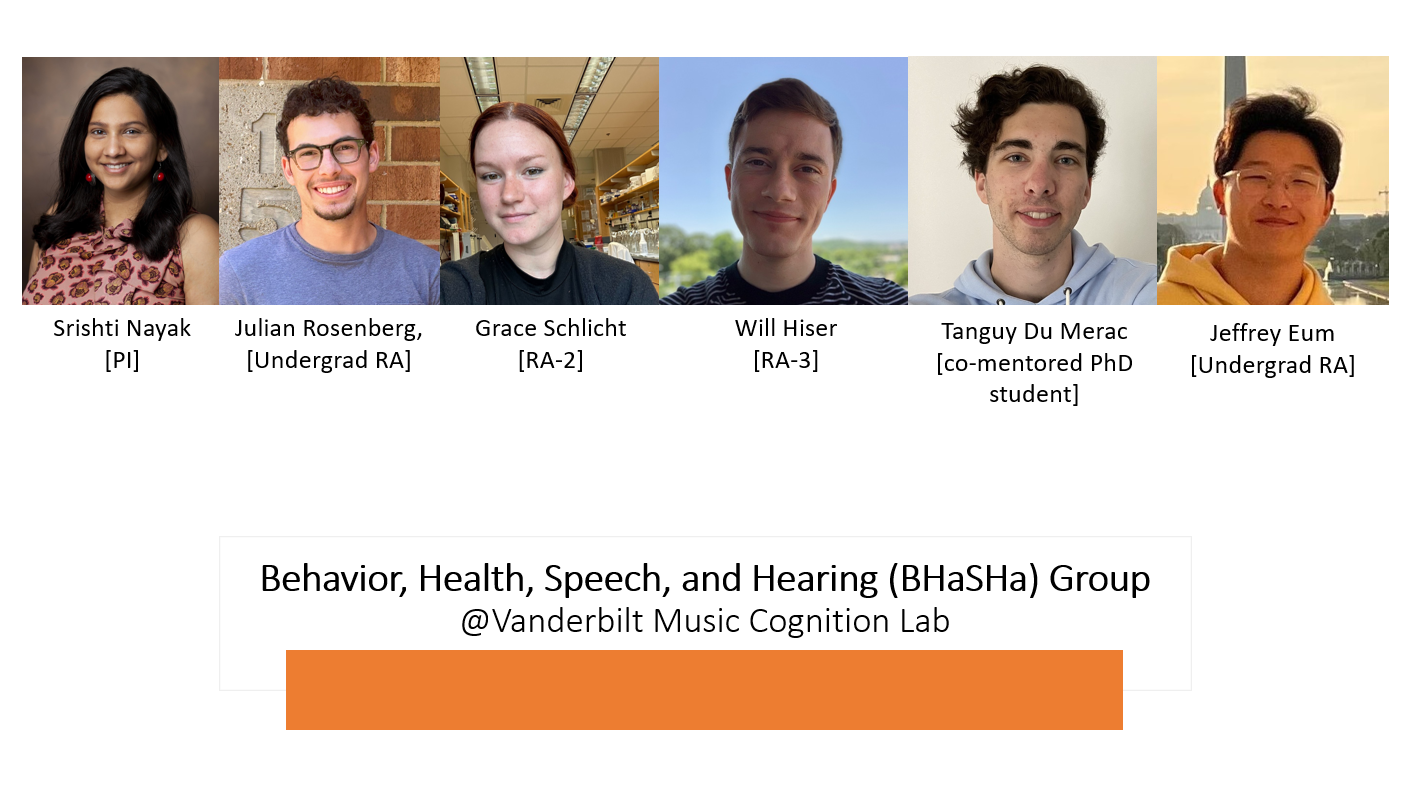
Group Description: “Bhasha” (or one of its derived forms) is a word used in many South Asian languages to describe language, speech, and voice. Within the context of our research team, we leverage this term to highlight the intersection between the human capacity for language - how we speak, how we listen to other voices, and how we understand each other.
Broadly speaking, our research focuses on the musicality of hearing and language, and how differences in how we interpret, understand, and relate to language may affect our health. We investigate these concepts through interdisciplinary research approaches, drawing on diverse methodologies from music science, biomedical informatics, psychological and brain sciences, communication sciences and disorders, and genetic epidemiology. Our active research questions of interest comprise the following:
- What patterns of mental and physical health are correlated with having speech-language and hearing disorders? What novel opportunities for early identification, screening, or intervention can we pinpoint by studying this?
- Which aspects of musicality are most relevant for speech-language, and hearing outcomes?
- How do people’s language experiences (e.g. speaking two languages) shape cognitive and brain related health outcomes? How do these patterns play out in the context of speech-language or hearing disorders?
List of current projects:
The Musicality, Hearing, and Genetics (MyHearinG) Project
Main question: Could higher degrees of musicality – both aptitude for and engagement with music – be a protective factor against hearing loss as we age?
Description: While there is abundant evidence that certain musical behaviors (e.g., regularly listening to loud music) are risk factors for age-related hearing loss (ARHL), human musicality also has the potential to support hearing health across the lifespan. Further, advances in the genetics of musicality show that genes involved in cochlear development are associated with phenotypic variation in musical aptitude. Preliminary studies also show a positive association between music engagement frequency and hearing sensitivity. Given this evidence, could higher degrees of musicality – both aptitude for and engagement with music – be a protective factor against hearing loss as we age? This project systematically tests this novel hypothesis using experimental, epidemiological, and genomic approaches.
Phenome-wide invesitgations of health in individuals with speech-language disorders (PhenLang)
Main question: What is the overall health impact of speech and language difficulties, disorders, and risk?
Description: Speech-language impairments have been clinically and genetically linked with risks for mental health disorders, poor physical health, and poor educational outcomes. However, large-scale studies of speech-language deficits primarily remain the purview of research on learning disabilities and developmental disorders (e.g., articulation and fluency disorders; developmental language disorders; autism), underestimating the health impact of speech and language traits for all individuals. Utilizing advances in large-scale Electronic Health Record (EHR) data, bioinformatics tools, and genomics research, this project aims to characterize the medical phenome of speech-language traits, difficulties, and disorders. We are utilizing the NIH’s All of Us Research Program, a large scale EHR and genomic data repository, to identify which diagnoses and genetic markers are most prevalent in individuals with speech-language problems and disorders. This phenome-wide approach, i.e. accounting for the entirety of a person’s health, disease, and well-being phenotypes, can lead to important insights about risk and resilience factors, comorbidities, and potential opportunities for intervention.
All our studies use computational or human participants approaches. Interested students can expect to gain research experience within the lab project that suits them best based on skills and interests.